…
The post SPCA-Emails first appeared on People Loving Animals.
Source link
…
The post SPCA-Emails first appeared on People Loving Animals.
Source link
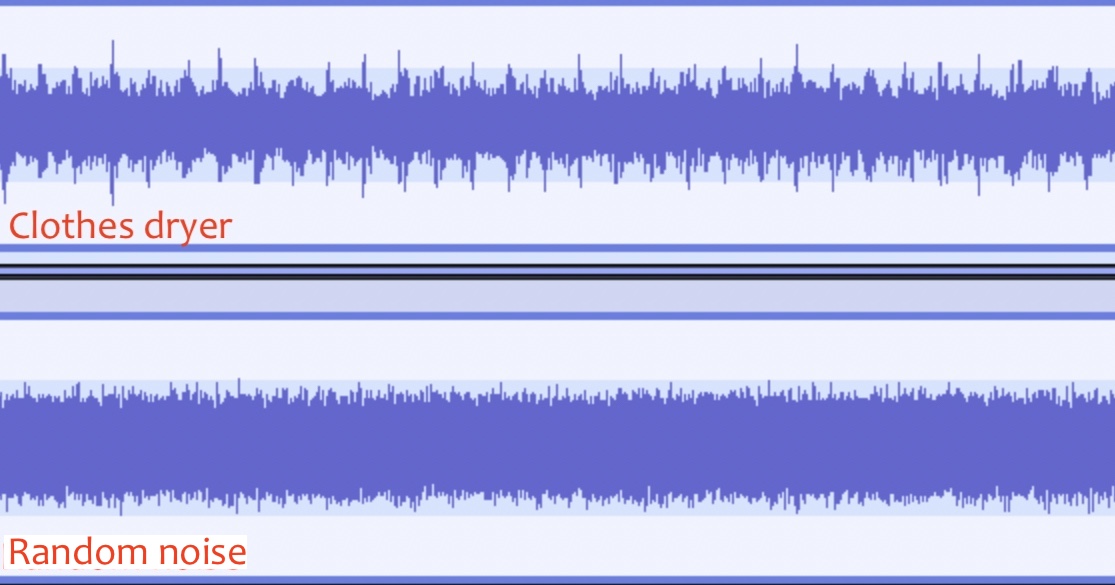
No, I don’t mean you should record the thunder! Record a custom masking noise for your dog who fears thunder, fireworks, or other sudden or low-frequency noises.
In my webinars and articles, I talk about the types of sound masking that work best. From a biophysics standpoint, the best multipurpose masking noises are brown or other random noise, fans, home appliances with motors, and music with a lot of bass and drums. Low frequencies can mask sounds of higher frequencies, but it doesn’t work the other way around (Kinsler et al., 1999, p. 318–320). That’s why I always recommend low frequencies as long as they don’t scare the dog.
Beyond the considerations of physics, we must customize to the individual dog. For instance, taiko drumming recordings are great for masking booms, but because of that, they may trigger your dog. The way to go about it is to think of what is available in your household that your dog is already OK with. You can record these known sounds, especially if they are duration sounds that include low frequencies. Appliances your dog is used to are ideal.
As I was scrambling to cope with Lewis’ newly emerging fears, it occurred to me that fan noise and random noise (brown, pink, white, etc.) are homogeneous. They create a hum or a whoosh or a rumble, but no momentary noises stand out. See the bottom waveform in the image at the beginning of this post. When the masking background is homogeneous noise, that means that sudden environmental noises stand out.
I realized that there is a household noise that Lewis is fine with that contains both a background hum/rumble, and occasional more sudden noises. That’s my dryer. See the top waveform in the first image. I’ve recommended in the past the “sports shoes in the dryer” trick (not original to me). I’ve never tried it with Lewis because I suspect it’s too close to his triggers. That could be a perfect solution for some dogs. But a regular load of clothes is perfect for Lewis. He hears it every two or three days without a problem. There is the homogeneous sound of the motor and the cyclical sounds of the drum rotating, and the occasional noise as a heavy piece of clothing makes a thump. In the waveform image above, those varying spikes on the top line represent the thumps and clunks.
My washer is pretty helpful, too. If I know that storms or fireworks are coming, I plan my laundry loads for those times as a bonus to the masking team.
But I can’t do laundry every time the scary noises come, not around here, where we have so many storms. And I don’t want to spend energy on unnecessary use. So now, when we get unexpected thunder, the first thing I do is throw some random clothing items into my dryer and turn it on to the air dry setting. But only for the time it takes to set up my little system. Then I play long recordings I’ve already made of the dryer on my Bluetooth speaker that has a subwoofer.
It still makes me grin, hearing laundry sounds coming from the laundry room when the appliances aren’t on. And now my recordings are part of my plan for any loud noise event.
I’m not sharing my own recording for public use, since it will be a foreign sound to every dog who hasn’t lived in my household.
But you can make your own recording of a dryer or other appliance your dog is habituated to.
When playing the recording, use a speaker that includes low frequencies. Do not play it on your handheld’s internal speaker; they are notoriously bad at putting out low frequencies. Send the sound to a wireless speaker with a good bass. I use an old tablet to play the sound files because I don’t want the devices I use every day attached to the speaker. You can get some unpleasant surprises and scare your dog that way.
Here’s a link to the speaker I have. From the next room, it’s hard for me to tell the difference between the dryer itself and my recordings. And while Lewis probably can tell the difference, the recording doesn’t bother him and is a useful addition to the masking environment.
Here’s an auditory demo showing the difference between homogeneous brown noise and the dryer sound with its bumps and clunks. You’ll hear, in sequence: 1) brown noise; 2) my dryer recording; and 3) the two combined. Doubling or tripling up on masking sources is a great idea if your dog is OK with them all (separately and together).

Masking is a management technique. It isn’t perfect, because there are no noises we can generate at home that can mask the loudest thunderclaps and booms of fireworks without being scary themselves. But masking can make the distant booms inaudible and moderate booms blend more into the background. On those lucky days when the storms don’t get close, masking can protect your dog effectively. And on the worse days, it can at least put a dent into the overall exposure.
For directly addressing our dogs’ fear, evidence suggests that medications, ad hoc counterconditioning, and relaxation training are our best tools (Riemer, 2020 & 2023).
Copyright 2025 Eileen Anderson
Top this page with cutest picture of Enzo
3 Short Videos of Mrs. Ponzi walking Enzo: Youtube private playlist
These outings were later forbidden by Mrs. Ponzi without explanation. And, as I said …
The post Enzo first appeared on People Loving Animals.
Source link
Taking a dog to a dog park can be a lot of fun, not only for your dog, but for you too! But are you and your pup truly ready for it?
Like any other social activity, it’s important for …
The post Dog Park Etiquette first appeared on People Loving Animals.
Source link
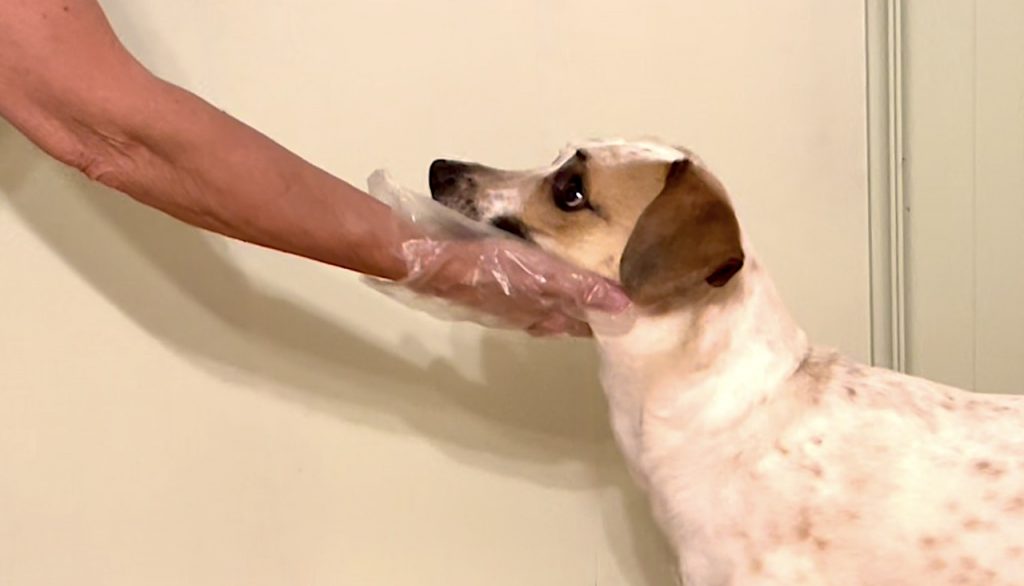
If someone ever invents an overshadowing Bingo game, Lewis and I will win!
Sometimes a stimulus we try to classically condition has more than one aspect that can be sensed, like an object that can be both seen and smelled. This kind of stimulus is called a compound stimulus. The phenomenon of overshadowing may occur when compound stimuli are conditioned because one of the simple stimuli will likely prevent the other/s from being conditioned fully or at all.
I recently encountered a situation where potentially five different stimuli were “competing” to be classically conditioned. And of those five, the one most likely to “win” the conditioning was not the one that I needed the most. I had to tackle the problem, because it was in a training project that was important for Lewis’ wellbeing.
Lewis has been diagnosed with sound phobia to fireworks and thunderstorms, and one of his medications is to be delivered topically to his gum and cheek tissue.
The instructions for administering this medicine require that the human wear protective gloves so as not to touch the medicinal gel, which can be absorbed through, for example, a cut in the skin. Gloves are a new thing for Lewis.
I thought about whether I should use classical conditioning to help him have a positive response to the gloves and gathered up what I needed. I use disposable kitchen gloves for a lot of tasks, so that’s what I got out. Whoa! These gloves make a distinctive noisy rattle when touched or manipulated. You can’t even get them out of the box without the dog hearing them.
You probably see where this is going.
I wanted Lewis to have good feelings about the gloves. But what aspect of them? How many things are potentially different for a dog when you put a glove on your hand for a husbandry task, one that includes putting your finger in the dog’s mouth? How about:
We’ve potentially got all five senses involved; the gloves present a compound stimulus.
Bingo?
How about another list? How many things about the gloves might bother Lewis? No need to repeat; it’s the same list. But knowing him, I would guess that having a gloved finger stuck in his mouth between his cheek and gums would bug him the most. But of all these, the sound often happens first, and is super salient. How can I classically condition the mouth touch without it being overshadowed by the crackle of the glove?
The plastic kitchen gloves I have are awful for the environment. I would make a different decision now. There is no perfect disposable glove yet, but latex is made from rubber and some latex gloves can be biodegradable. Reusable rubber gloves would be better than what I have, but they are too bulky for this job with this dog. Feel free to comment with suggestions.
So, how do I make sure that Lewis has positive feelings about being touched (in the mouth) by the gloves, given that classical conditioning is more likely to attach to the sound of them? Here are the possibilities I considered.
Different gloves: I’m sure some of you are internally screaming a solution. Get different gloves! Quieter ones! Good idea. I’ll be looking for a better choice. But in the meantime, I’ll proceed with what I have.
Workarounds: There are some things I could try to do about the sound. I could put on the gloves in a far part of the house and play masking sounds while I did that, just to be sure. Then I could approach Lewis and do whatever step of the plan comes next. Show him a gloved hand, treat. Or touch him with a gloved finger, treat. That could prevent some of the predictive power of rattling the gloves. But when I show him or touch him, the gloves will still make noise.
Use an operant training plan: This is the solution I chose. The gloves were not scary to Lewis; they were just new and weird. So rather than aiming for classical conditioning, I went for desensitization coupled with operant conditioning.
For our first session, I tossed him a couple of treats when I got the gloves out. Then I reinforced sniffing the glove, nose-targeting the glove while I held it loosely, and nose-targeting it while it was on my hand. Then I asked him to do a chin rest on a towel in my lap with the glove on top. Lewis said, “This is easy money!”
In the next sessions, I had the glove on my right hand and touched his cheek while I held his muzzle with my left. We had previously worked on this step without the glove.
The video includes excerpts from the three training sessions where we progressed from him accepting my finger in his mouth to accepting my gloved finger in his mouth. We spent six to seven minutes of training over three sessions, which was more time than he needed.
Watch with sound if you want to hear how noisy the gloves are (and hear me say, “Good boy!” about a thousand times).
The operant work with the gloves made them predictors of good things (classical conditioning rode along). This work gave Lewis a great foundation for the next step: putting a syringe between his cheek and gum while wearing gloves. The gloved finger was a good early substitute for the syringe.
Multiple simultaneous stimuli are happening all the time. When presenting an object, you can bet that most dogs will smell it as well as see it. Lots of visual stimuli make noises, too. As one textbook points out, it’s almost impossible to avoid multiple stimuli (Pierce & Cheney, 2008, p. 58). This experience has made me think about them a lot more. The Bingo game is not all that unusual. I’m pleased I figured out a way to win this time.
Thank you to the several professionals who provided materials and direct help for Lewis’ husbandry training. I could not have done it alone!
Copyright 2025 Eileen Anderson
Watch a free video from professional dog trainer Doggy Dan showing you how to calm aggressive dogs quickly,
…
The post Stop Dog Aggression NOW! first appeared on People Loving Animals.
Source link
Is your dog’s behavior making life stressful? Struggling with leash pulling, aggression, barking, or jumping?
Watch a free video from professional dog trainer Doggy Dan and learn how to address your dog’s most frustrating
…
The post landing page for new doggy dan page first appeared on People Loving Animals.
Source link
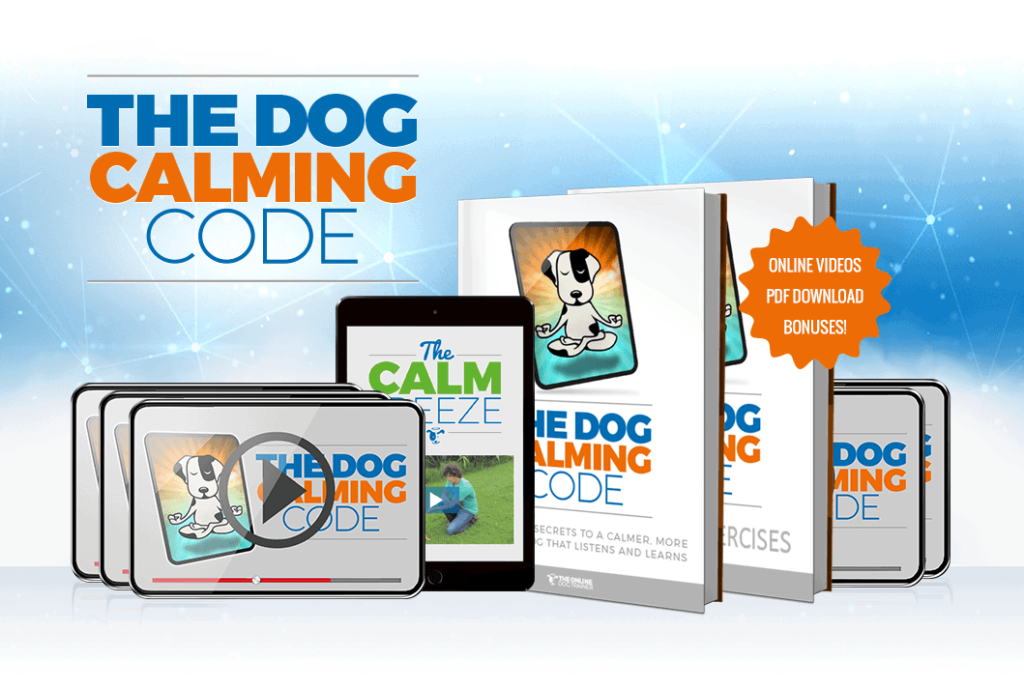
See results in as little as one session.
…
The post Stop Dog Aggression FAST first appeared on People Loving Animals.
Source link

If your
…
The post Does Your Dog Struggle with Anxiety? first appeared on People Loving Animals.
Source link
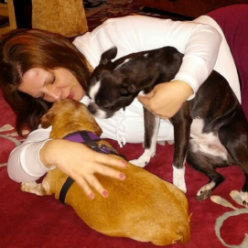
Cats are all about that chill life, right? Giving your kitty a cozy space is super important. Think about comfy corners and high perches where your cat can watch the world go by. Cats love their “me time,” so a little private nook would be purr-fect!

As with any living thing, human or animal, cats need to know they’re loved and cared about! Sometimes life gets busy, and I know how hard it can be to make sure I make time for my cat, Whiskers. That’s him in the pic snuggling on my leg. Awwww…
And, as you probably can relate to, my heart breaks when I realize I’ve been busy all day and was barely aware of him! Here are some ways we, as cat parents, can keep our bond with our cat front and center.
In this post, we’ll cover:
![]()
Ever wish your cat came with subtitles? Understanding what your cat’s body language means can change the game. Whiskers forward? They might be curious. Slow blinking? That’s basically cat for, “I love you.”
For lots of help not only understanding your cat’s body language, but to actually learn how to communicate with your cat effectively, check out this post, How to Understand Cat Language.
In that post, I give details about an inexpensive eBook called, The Cat Language Bible. Check it out. You and your cat will be glad you did!
Also check out my post, How Do Cats Show Love? 10 Ways Cats Say, I Love You (includes video).
Feeding your cat isn’t just about what’s convenient. A balanced diet with the right nutrients helps keep that fur shiny and those eyes bright. A healthy cat is a happy cat, so check those food labels and maybe even chat with your vet about what’s best for your little buddy.
For help choosing the right food for your cat, check out this post, What is the Best Food for My Cat? (includes video).
My recommendation if you want fresh cat food (that’s delivered!) is Smalls Cat Food. You can read my full review of Smalls Cat Food here.
Regular check-ups can catch any sneaky health issues before they become a problem. Plus, it keeps your cat comfortable and familiar with the vet—a win-win for everyone involved!
If you struggle to pay for vet bills for your cat, consider an inexpensive pet insurance policy from Lemonade Pet Insurance. They’re my #1 recommendation for cat owners. You can read my full review of Lemonade Pet Insurance here.
Another way to keep your cat healthy is adding calming elements like soft music or gentle lights to your home. You’d be surprised at how a little ambience can lower stress levels for both you and your furry friend.
Setting the right mood can make your home feel like a five-star resort for your feline companion.

Check out this inexpensive eBook called, The Complete Cat Health and Care Guide for lots of help with your cat’s care, health and training.
This guide not only covers cat health questions, but also covers all aspects of cat care, including how to create a loving relationship with your cat. You can read my full review of this super helpful eBook here.
There’s lots you can do to build a strong bond with your cat! Try these suggestions to set the stage for building an unbreakable bond with your cat!
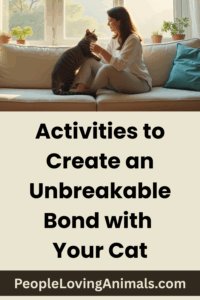
Cats aren’t just couch potatoes—they love a good playtime session! Variety is key, so stock up on different types of toys to keep their instincts sharp.
Feather wands, laser pointers, or even a good ol’ crumpled piece of paper can work wonders. Check out this video from cat expert, Jackson Galaxy called, Play with Your Cat!
You can find lots of fantastic cat toys on Amazon.
There are right ways to do it you’ll want to know about. Some cats love a chin scratch; others might prefer a gentle stroke along the back. Always avoid the belly unless you’re 100% sure your cat likes it, or you’ll get a surprise swat!
Yeah, cats can learn them too! Simple commands like ‘sit’ or ‘stay’ can be taught with a little patience and some tasty treats. It’s a great way to bond and impress your friends.
They keep your cat engaged and thinking, making snack time a little more exciting. These feeders mimic the hunt, which keeps your cat’s mind sharp and engaged.
Cats are creatures of habit, and they love knowing what to expect. Whether it’s feeding times or bedtime cuddles, a little consistency can go a long way towards building trust.
Check out my post, How to Keep Indoor Cats Happy: 10 Things They’ll Love! (includes video)
For more great ideas on how to build a bond with your cat, read this post, 11 Ways to Bond with Your Cat.
If you also have a dog, check out my post, How to Bond with Your Dog. Spoiler alert: bonding with a dog starts with kind, loving training. Your dog will love you for it!

Thank you for visiting my website! I hope this post has provided you with lost of ideas on how you and your cat can have a loving, lifelong bond.
You should know there are affiliate links in this post. If you make a purchase using any of my links, I will earn a small commission. I donate 10% of my profits from this website to the animal charities listed here.
If you liked this post, please share it with other cat lovers! Thanks so much. Debra